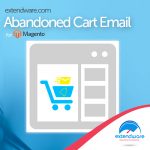Magento includes a large library of attributes you can enable within your store. One field that many stores fail to unlock is Cost of Goods Sold. In Magento, Cost of Goods Sold is called “Cost” and it lives in the Prices section of each of your products.
Cost of Goods Sold (COGS) is the amount of money spent on raw materials to create product, or the amount of money used to purchase a product from a wholesaler. COGS is important because it helps stores calculate Gross Margin by product.
Revenue – Cost of Goods Sold = Gross Margin
Gross Margin (also called Gross Profit) is an important driver of store strategy and should be well understood for each product.  Because Gross Margin represents cash available after paying a supplier, it’s good to use as a primary consideration when managing marketing expenses. Products that have high Gross Margins, such as electronics, are better suited for pricier marketing campaigns, while low Gross Margin items may be a better fit for scalable marketing such as email campaigns.
Because Gross Margin represents cash available after paying a supplier, it’s good to use as a primary consideration when managing marketing expenses. Products that have high Gross Margins, such as electronics, are better suited for pricier marketing campaigns, while low Gross Margin items may be a better fit for scalable marketing such as email campaigns.
In some cases, increasing marketing spend on low-margin items may actually make sense. By combining sales volume with Gross Margin data, you may learn that a low-Gross Margin item is generating a healthy amount of cash thanks to a large number of orders. For instance, selling one bracelet may generate six dollars of Gross Margin, but selling 500 bracelets may generate $3,000 of Gross Margin. While it may seem intuitive that you would spend more cash to market high sales-volume products, knowing the exact Gross Margin for an item will help you understand how much of a product’s Gross Margin can comfortably be allocated to marketing. It will also help you track the return on your advertising spend by product. Keep in mind, marketing is just one of many operating expenses. You’ll want to consider other expenses as well when you budget for advertising spend.
Tips for Using Gross Margin to Dictate Strategy
- Place items that have a healthy Gross Margin and that convert well in the prime real-estate positions of your store.
- Bundle low-margin items with high-margin items to justify the time and effort spent on merchandising and shipping costs. Or where appropriate, only sell your low-margin products in packs of three or five.
- Raise advertising spend for items that generate high amounts of Gross Profit, but be sure to analyze the effects of increased spend on sales volume to understand the return on this spend.
- Negotiate with your vendors to reduce Cost of Goods Sold. Consider switching out expensive materials for options that don’t compromise quality.
Ready to get started? Here are the steps for enabling Cost attributes to appear on each product:
Step 1: Log in to your account and go to Catalog > Attributes > Manage Attributes.
Step 2: Under Attribute Label search for ‘Cost’ and click on the row.
Step 3: Scroll down to Apply To and change the setting to be ‘All Product Types.’
Step 4: Save your work and go to Catalog > Manage Products.
Step 5: Click on a product and go into the Prices tab. Enter the Cost for each product and save your work.
All done! I hope that helps with your Cost Attributes and Gross Margin calculations. Anything that can give you a better idea of exactly how you’re making money is a step in the right direction. Until next time!
Sheryl Davis is a digital marketer at Glew, an E-Commerce analytics software provider, where she focuses on helping online stores understand and act on their data. Each week she publishes practical strategies for ways to rock E-Commerce.
Abandoned Cart Extension Overview
Extendware’s Magento Abandoned Cart Email extension allows you to capture additional sales by emailing customers who have abandoned their shopping cart without making a purchase. You can send an unlimited number of follow-up emails to the potential customer and even attach an automatically generated coupon to the follow-up email in order to incentivize a new purchase. This extension pays for itself within just a few orders.





